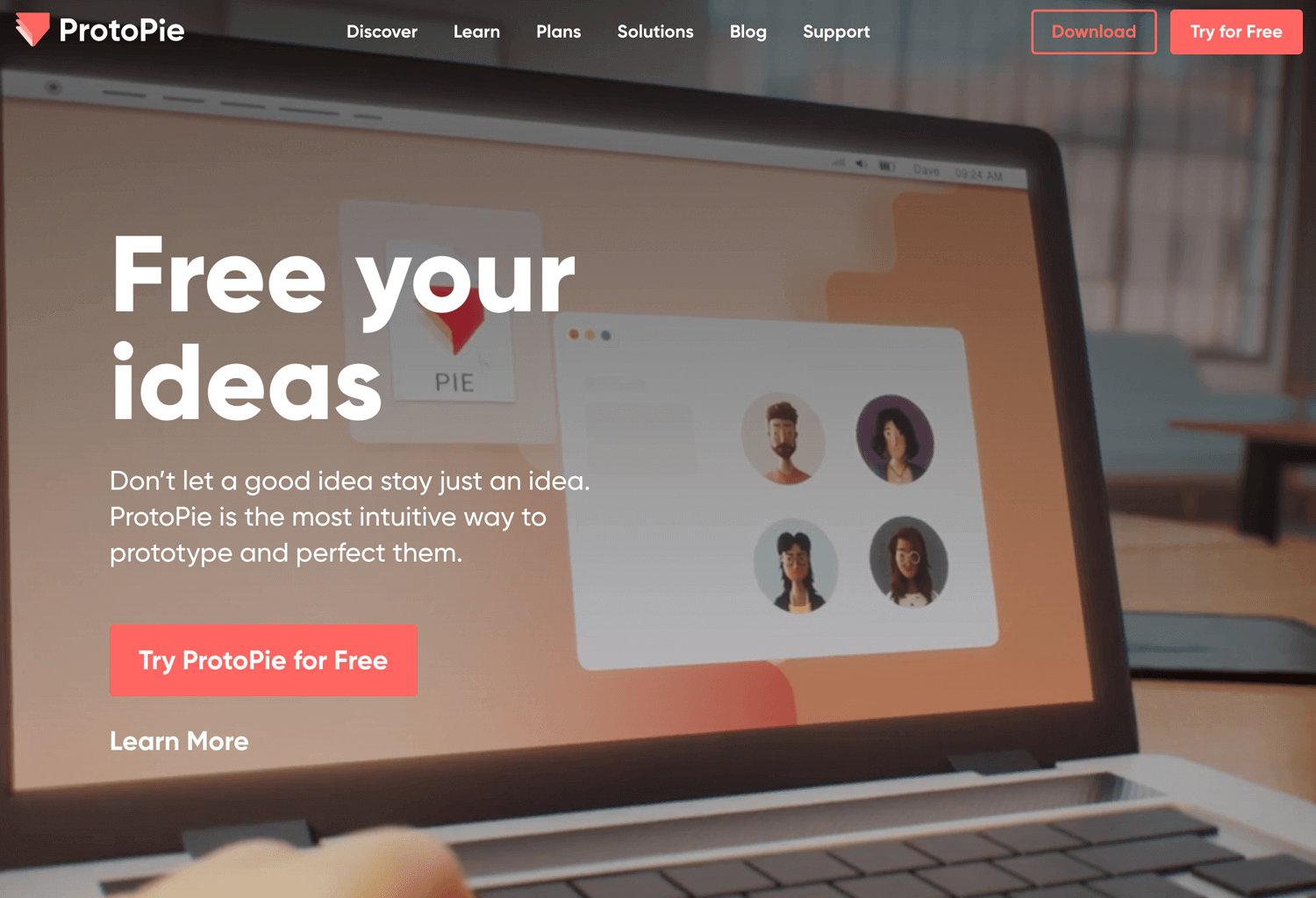

ProtoPie is pretty similar to the Framer X in a way that both companies noticed the aversion of designers to write code.

On the Choose Filter screen draw out a link hotspot (D) on the last thumbnail, and connect it to the Filter Applied screen. ProtoPie is a fairly young product, but in this dynamic environment having something like a year and a half feels already old. Let’s get this type of interaction up, and running with the Transition Designer… The far right image thumbnail is clicked on to change the large image to one with the gradient applied (as shown on the Filter Applied screen), and then to switch back to the default image when the thumbnail on the far left is clicked. Hopefully you can see from our Choose Filter, and Filter Applied screens we want to have a transition where one of the filter options is chosen at the bottom of the screen, and in turn the large image is changed to reflect this. But once you decide on trying a transition of your own, that is where the Transition Designer comes into play.

Up until now I’ve just shown you the default Transitions that are available.
#Sketch flinto protopie principle code
It generates only Swift code for iOS apps at present but has a flexible generation system that's template driven.One of the best features (amongst many others), is the Transition Designer. Flow takes two Sketch artboards and generates the animation between them automatically, then lets you fiddle with it.Haiku generates Lottie files and code so you can have mobile animation, but also has website output with more control, integrated with major JS frameworks.Two other products worth looking at if you're just prototyping animations but want working output:

They also have a cloud product for sharing designs and reviewing.
#Sketch flinto protopie principle full
Supernova Studio requires you start in Sketch and their one weak point at this time is re-importing a single screen loses some details, but it's a team that moves very fast so any criticism you read needs to be current.Īfter importing static screens from Sketch you then set properties, add animation, prototyping links between pages and generate full working native code or React Native apps.īecause it's constraining your work to the needs of the code generator, it's like having a developer by your side continuously. Obviously, a skilled dev team can build anything but the budget often doesn't allow for it. I have long despaired about how the tooling world was ever-focused on products which only got as far as generating image assets and sometimes videos for hand-over but had no brakes to bring them back to reality. (I also have a long pedigree in code-gen having worked on the two dominant products in Classic MacOS days). Jan, I come from a developer perspective (35 years) and I'm crazy in love with Supernova Studio because it backs up what you do in design with full code generation. I've even created quick prototypes with vanilla HTML, CSS and JS. I can't imagine (nor would I recommend) doing an entire application flow in those tools, and would never attempt to do that.įigma clickthroughs have been mainly what we use now, and jump into Principle (as of late) for micro-interactions, and to demonstrate to the development team how we want something to function. but instead use them to show complex visual behaviors that provide callouts, direct the user, and enhance the overall experience. I'd also wager most of us (myself included) don't do an entire prototype flow within Flinto, ProtoPie, Principle, etc. We do occasionally make those rare rapid changes before implementation (even scrapping entire flows), but more often we have simpler clickthrough prototypes, and white-boarding sessions that decide flows before we ever get to adding the micro-interactions that Flinto, etc are intended to provide. You can add another view into the flow, or alter as needed, updating the few behaviors that need changes. Just because a flow changes doesn't mean the entire interaction design isn't broken. I understand what you are saying, and I promise you that most of us work in Sprints, and "Agile" environments with living products.


 0 kommentar(er)
0 kommentar(er)
